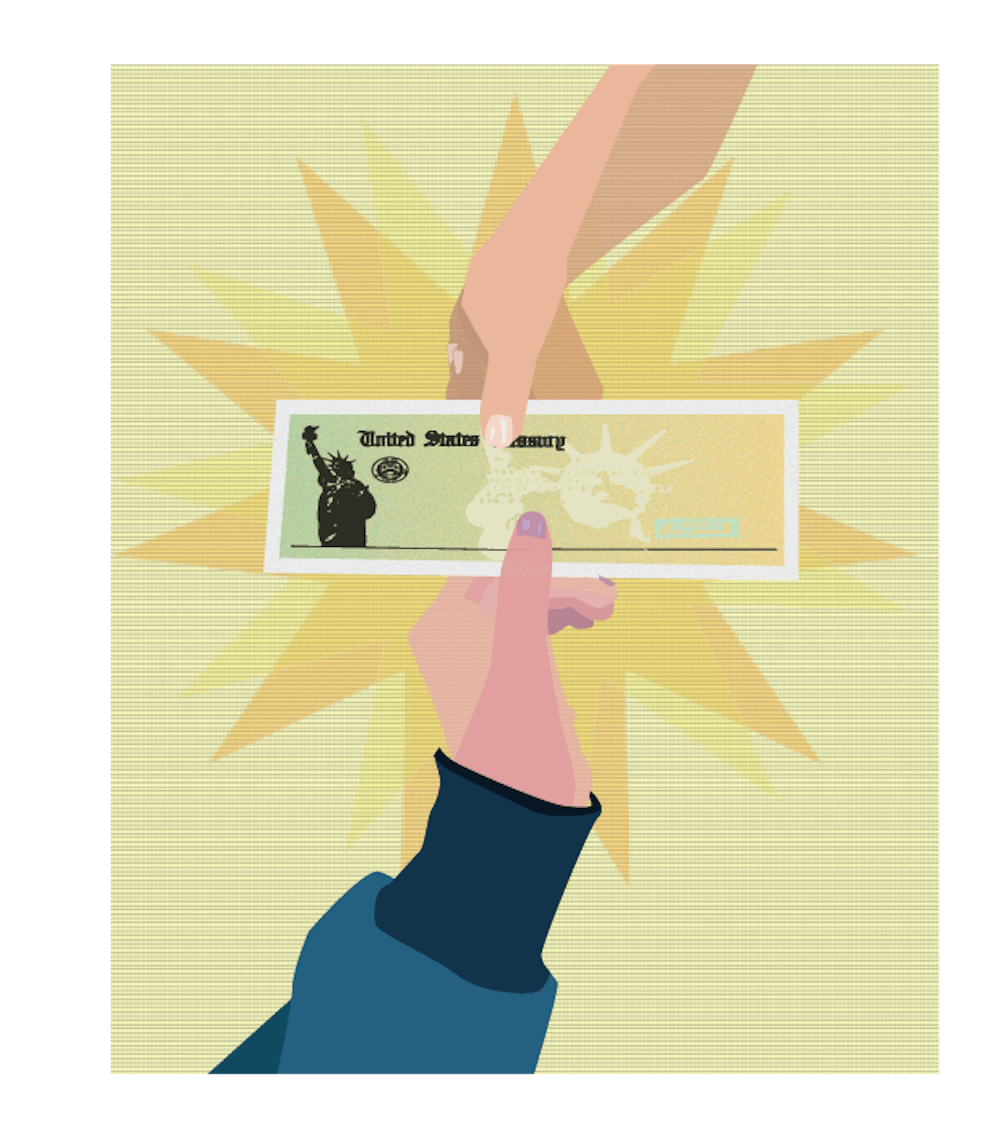With the signing of the American Rescue Plan Act of 2021, college students are getting their own stimulus checks in the third round of pandemic-related aid.
Well, almost.
Unlike the Coronavirus Aid, Relief, and Economic Security (CARES) Act last spring, which provided one-time payments of $1,200 to independent adults, with an additional $600 for each dependent under 17 years old, the American Rescue Plan Act accounts for adult dependents.
Most college students won’t get their own $1,400 checks directly, though – their guardians will receive an additional $1,400 for each dependent they claim on their tax returns regardless of age.
For Halli Reed, junior environmental earth science and sustainability double major, the change was a welcome one.
“I was pretty happy being factored into it just because I am a dependent, but I pay my own rent, and I have bills and everything,” Reed said. “It was nice to be able to have the $1,400 because I can save up for rent or for bills.”
Reed’s parents sent her a check last week to deposit in the bank. She said it was a relief, especially after last summer when she worked extra hours as a nanny to make up for not being included in the first round of stimulus checks.
“Thankfully, I have a good relationship with my parents, so I was able to talk to them,” Reed said. “But I think it’d be better if it was directly put into college students’ accounts because I know not everyone probably has parents that are going to be as willing to give it to them.”
George Davis, a professor of economics at Miami University, said college students may have been excluded from previous rounds of aid because they’re assumed not to be full time employees and therefore didn’t have as significant a loss in income as others.
“If you were a full-time student, the rationale would be that you were not originally in the workforce to begin with,” Davis said. “They call these stimulus packages, [but] the idea is really not so much economic stimulus, but a lot of it was income support.”
Even though this round of checks is going directly to parents or guardians rather than students themselves, Davis said it is functionally the same as long as their guardians agree on how to spend it.
For example, the largest expense for many college students is student loans, so both parents and their kids are likely to put their stimulus money toward tuition or rent.
Enjoy what you're reading?
Signup for our newsletter
Alexis Bebout, a sophomore psychology and sociology double major, said she woke up with a text from her stepmother one day saying she’d deposited the $1,400 in Bebout’s bank account.
“I didn’t even know I was going to get the stimulus check,” Bebout said. “I don’t really stay up to date on anything in the United States that’s happening.”
Bebout said she isn’t a big spender, and she plans to save the money to help pay for school-related expenses next semester.
As the vaccination process speeds up across the country, Davis said he doesn’t see another round of direct aid in the future. It likely won’t be the last bill aimed at mitigating the economic effects of the pandemic, though.
“There are a lot of disruptions and shocks that we don’t even know what their implications are gonna be later on … the reverberations of the consequences of lockdown, the businesses that closed and aren’t gonna be able to start up again,” Davis said. “We really don’t know. We’ve never been through this before, so we don’t know what the longer run consequences of this lockdown and pandemic are gonna be … in the next two years, five years down the line.”
Still, if there is another round of direct payments, Bebout said she hopes college students won’t be excluded again.
“If [a stimulus package] was to happen again, I would like to be included,” Bebout said, “simply because if you can do it now, I’m kind of in the mindset of we should have been included the whole time.”




